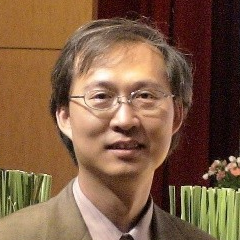Metal-Insulator Transition
A special issue of Materials (ISSN 1996-1944).
Deadline for manuscript submissions: closed (30 June 2017) | Viewed by 51358
Special Issue Editor
Interests: transition-metal oxides; metal–insulator transition; charge– orbital ordering; strong correlations; magnetism; multiferroic materials; 2D materials; electron–phonon superconductors; topological insulators/semimetals/superconductors; thermoelectric materials; thin films, nano-structures; surface systems
Special Issues, Collections and Topics in MDPI journals
Special Issue Information
Dear Colleagues,
Metal-insulator transition, characterized by an abrupt change in the electrical conductivity from a metallic to an insulating phase, is an important phenomenon, widely observed in various condensed-matter systems. It is frequently found in transition-metal oxides and semiconductors, though it can also be found in emergent materials, such as two-dimensional and topological materials. Because of the huge resistivity changes, even over tens of orders of magnitude, metal-insulator transition, not only shows great importance in fundamental physics and material research, but also provides great potentials in nanotechnology. These transitions can be manipulated by tuning various ambient parameters, such as pressure, doping, strain, and so on. For two-dimensional layered systems, there are extra degrees of freedom to achieve the metal-insulator transition by controlling the number of layers and/or shaping the layer edges. Intrinsic parameters, such as the strong electron-electron correlation and the spin-orbit coupling strength, play a crucial role in band gap formation in transition-metal oxides and topological materials, respectively. In the former case, the insulating phase, caused by the correlation effects, is categorized as Mott insulators, while, in the latter case, the strong spin-orbit coupling strength may lead to the metallic topological states in topological insulators and semiconductors. As such, this Special Issue is dedicated to achieve a better understanding on the metal-insulator transitions in all kinds of materials and nanotechnology applications.
Prof. Dr. Horng-Tay Jeng
Guest Editor
Manuscript Submission Information
Manuscripts should be submitted online at www.mdpi.com by registering and logging in to this website. Once you are registered, click here to go to the submission form. Manuscripts can be submitted until the deadline. All submissions that pass pre-check are peer-reviewed. Accepted papers will be published continuously in the journal (as soon as accepted) and will be listed together on the special issue website. Research articles, review articles as well as short communications are invited. For planned papers, a title and short abstract (about 100 words) can be sent to the Editorial Office for announcement on this website.
Submitted manuscripts should not have been published previously, nor be under consideration for publication elsewhere (except conference proceedings papers). All manuscripts are thoroughly refereed through a single-blind peer-review process. A guide for authors and other relevant information for submission of manuscripts is available on the Instructions for Authors page. Materials is an international peer-reviewed open access semimonthly journal published by MDPI.
Please visit the Instructions for Authors page before submitting a manuscript. The Article Processing Charge (APC) for publication in this open access journal is 2600 CHF (Swiss Francs). Submitted papers should be well formatted and use good English. Authors may use MDPI's English editing service prior to publication or during author revisions.
Keywords
- Metal-insulator transition
- transition-metal oxides
- 2-dimensional materials
- topological materials
- strong electron-electron correlation
- spin-orbit coupling
- Mott insulators
- topological insulators
- topological semiconductors
- nanotechnology






